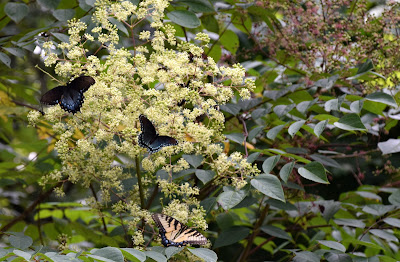We’re moving! After 22 years – the very heart of my
native plant journey – we are downsizing and moving to a smaller house (but not
a smaller yard). This may be our third house, but
the landscape will be familiar because we’ll still be in the Piedmont ecoregion.
 |
| A photo from 2008 when my friend Sheri made a planter out of native perennials for my turn on the GNPS garden tour |
Of course I’ll take some plants, as I did 22 years ago. I still have things in pots so they’ll find their forever home there instead of here. I will also pot up a few of my favorite perennials and hope they don’t mind being uprooted during this very hot time. So far I've dug up over 60 baby ferns out of the lawn (the new place has very few ferns so these will be a good starter set). [To the person who might buy this place, plenty more will come back; fern spores seem to do well in our lightly-maintained lawn.]
 |
| I hope I have ferns in the lawn at the new place too |
The trees and shrubs that I’ve planted over the years will remain: bigleaf magnolias that shade the swimming pool; thick and lush mountain laurel at the front of the house; fragrant native azaleas; graceful snowbells; tasty blueberries and pawpaws; thorny hawthorns; red and bottlebrush buckeyes; and that amazing devil’s walking stick.
It’s been a journey here, and while I’m done in Cherokee County, it’s a journey that I will happily continue in Jackson County. During the transition I may not have time to post on the blog every week – something I’ve done weekly since late 2010 – but I’ll post when I can.
If you’re looking for a house in the woods (2 acres!) with native plants, the listing for this property should be available in early to mid-September. Here is what it
looked like in 2016, but of course some things have changed. If you are
looking for native plant friendly homes in Florida & Georgia,
there is a Facebook group for that.




